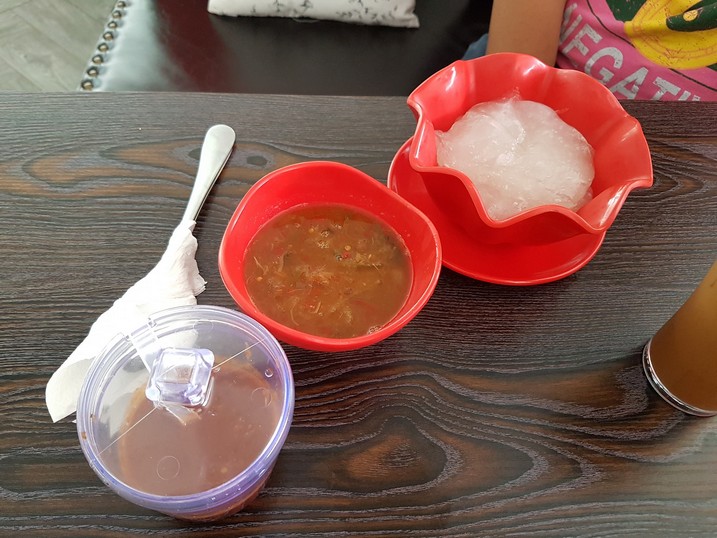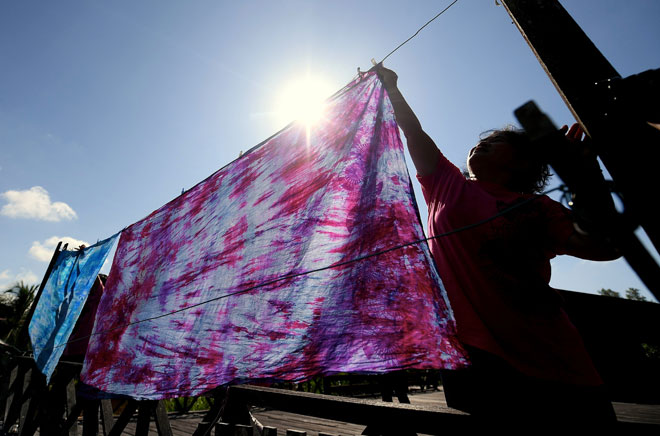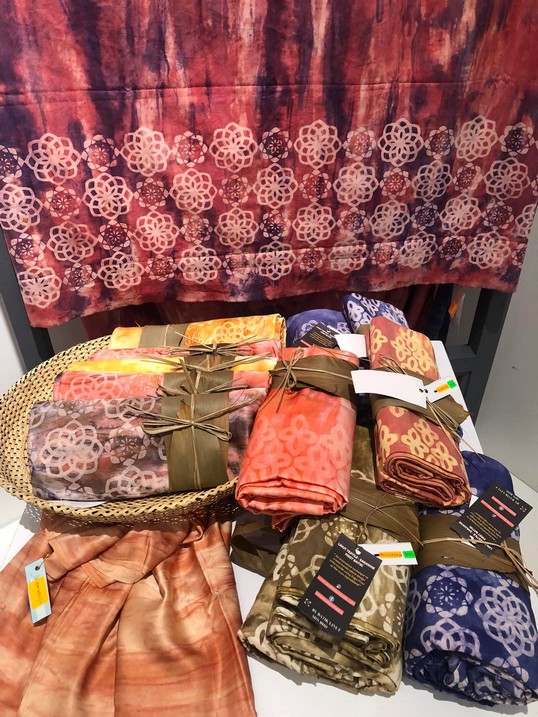Hear the word ‘sago’ and the first thought many of us would have is food.
The versatile starchy carbohydrate, which usually comes in forms of flour or pearls when purchased at supermarkets, can be used to bake and cook various kinds of food, and is even a dietary staple in some parts of Southeast Asia and Oceania.
These include Sarawak – the world’s largest sago exporter – where sago is synonymous with the Melanau community and their centuries-old tradition and heritage of the food.
One of their most popular dishes is linut, a sticky porridge-like delicacy which requires sago flour, hot water and a little bit of patience to make. As far as the Melanau or other local communities in Sarawak are concerned, linut is something that is only meant to be consumed.

In 2019, however, that perception began to shift, when a team from Lamin Dana of Kampung Tellian, Mukah, under the guidance of the Malaysian Handicraft Development Corporation (Kraftangan Malaysia) Sarawak branch, embarked on a pioneering initiative to explore the potential of linut beyond culinary, particularly in handicraft.
The result of which was Batik Linut, an innovation that uses sago flour as its key ingredient to create and design unique colours and patterns on textiles.

A More ‘Natural’ Approach to Batik Making
Batik involves decorating fabrics like linen, silk and cotton by employing the wax-resist dyeing technique. An ancient art form of Indonesia, it has been practised across the globe for centuries, from China, Japan and India to South America and Europe.
At present, waxes used in batik making are made from paraffin, beeswax and soy. Although paraffin is readily available in the form of candle wax and is less expensive, it is not as environmentally friendly as beeswax or soy.
And in the case of Sarawak, obtaining this material can be challenging. Enter the discovery of sago and specifically linut as another “natural” source for batik wax.
“In the production of batik, linut is seen as a colour resist material that can replace candle wax, based on its properties when dried and its ease of removal from the textile with water.


“The idea of using linut as a new approach came about when we were tasked to search for innovations that could offer variations either in terms of the use of materials, techniques, processes and pattern designs, as well as create a new identity for the local community.
“So, we are looking for a way to utilise the natural resources available here to be highlighted in the production of new handicrafts,” says Kraftangan Malaysia Sarawak director Encik Azran Arip.
He added that Mukah, where Kampung Tellian is located, was selected to be the first region to be part of the Batik Linut Production Development Project for it was where most sago products were manufactured at an affordable cost, thereby ensuring continuous production of the textile.

To give batik linut a more “exclusive” Melanau identity, motifs inspired by the community’s traditional fashion and nature are highlighted on each fabric through the silk screen printing technique, including kunci (button), baju bangkuas, buah mulung and terendak.
Out of this, various products have been created by the local community of Kampung Tellian to expand their range of cultural products, such as fashion fabrics, ready-made garments, bags, interior decoration including tablecloths and cushion covers, and accessories like hair ties.
“We are all really excited about producing this batik linut because it uses a basic material that is around us, not to mention how cheap it is.
“Most importantly, it has attracted the interest of youths including students, apart from home makers, entrepreneurs and fashion designers.
“And indirectly, this project has allowed us to bring together people who are involved in the textile industry, such as those from the New Craft Community,” expresses project coordinator and Kampung Tellian native Mdm Diana Rose.
A Craft Innovation Going Global
Following the success of the handicraft project at Kampung Tellian, batik linut was introduced to the public in April 2019 in conjunction with Borneo Textile Week in Kota Kinabalu and Kaul Festival in Mukah, before being promoted in other parts of Malaysia and overseas such as Singapore and Dubai.

It was then launched in Miri City under ‘Proudly Sarawak’, a platform that highlights Sarawak handicrafts made by local talents from various ethnicities for the world to discover.
Mdm Diana, who is also Lamin Dana Sdn Bhd managing director, explains that the resort city was selected due to its economic advantage as the gateway to the northern region of Sarawak and its people’s high purchasing power.

This is especially the case with Miri’s direct air connectivity to Singapore and its strategic location that is close to the borders of Brunei and Sabah.
“This is a win-win situation for us. While we share our (Melanau) heritage and soul with Miri (through batik linut), the city has another tourist attraction product to promote,” she says.
Responses to batik linut has since been encouraging, more so from the textile and creative industries.
To further commercialise the textile, Lamin Dana has opened its own office and showroom at Coco Cabana in Miri, with future plans to set up more offices in Kuching, Nilai in Negeri Sembilan and Singapore through the Sarawak Trade and Tourism Office (STATOS).
For Kraftangan Malaysia Sarawak, research and development of linut is ongoing, focusing on enhance its properties as a resist material and subsequently turning batik linut into an eco-friendly fabric.
In the long term, a further understanding and application of linut can elevate the production quality of batik linut, benefiting local communities such as Kampung Tellian whether in promoting culture and heritage or even empowering their capability to develop socially and economically.
How Batik Linut is Made
The process of making batik linut begins with a 2.5 to four-metre long white cotton cloth dyed in linut, then dried under the sun until it is parched enough to be dyed a second time to add colours and hung to dry again.
Afterwards, the fabric is dipped into a special chemical to lock the colours in before it is dried, boiled and washed. Depending on the weather, the entire process takes about one to three days to complete.
While all batik linut fabrics undergo the same process, the effects of the folds and crumples as they are coated in linut produce unique and distinctive background patterns and colours, making each of them one of a kind.
Sources: Bernama; Berita Harian





